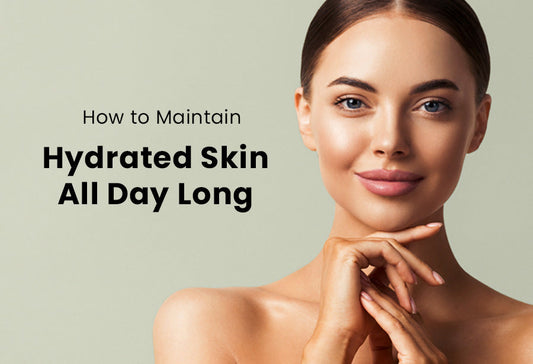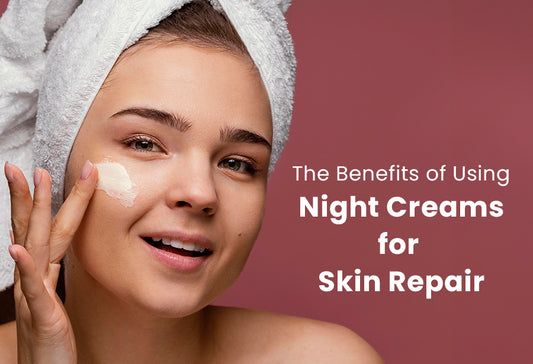
How to Treat Cystic Acne: 5 Effective Methods
Dealing with acne can be a frustrating and challenging experience, especially when it comes to cystic acne. Cystic acne is a severe form of acne that occurs when pores become clogged with bacteria, dead skin cells, and oil, resulting in painful, inflamed cysts deep within the skin. Unlike regular pimples, cystic acne can be stubborn and may leave behind deep scars if not treated properly. In this blog, we will explore five effective methods to treat cystic acne, helping you achieve clearer and healthier skin.
Topical Treatments with Benzoyl Peroxide
Benzoyl peroxide is a powerful topical treatment that is widely used to combat acne, including cystic acne. It works by killing acne-causing bacteria and reducing inflammation, helping to unclog pores and promote healing.
How to Use Benzoyl Peroxide:
- Start with a low concentration: Begin with a 2.5% or 5% benzoyl peroxide formulation to minimize the risk of skin irritation.
- Apply a thin layer: After cleansing your face, apply a thin layer of benzoyl peroxide to the affected areas.
- Gradually increase usage: If your skin tolerates benzoyl peroxide well, you can gradually increase the frequency of application.
- Be patient: It may take several weeks for noticeable improvements, so be patient and consistent with your treatment.
Salicylic Acid for Exfoliation
Salicylic acid is a beta hydroxy acid (BHA) known for its exfoliating properties. It penetrates deep into the pores to dissolve excess oil and dead skin cells, helping to prevent clogging and reduce inflammation.
How to Use Salicylic Acid:
- Choose the right product: Look for cleansers, toners, or spot treatments with 2% salicylic acid.
- Cleanse your face: Wash your face with a gentle cleanser before applying salicylic acid.
- Spot treat or use all over: You can either apply salicylic acid directly to cystic acne spots or use it all over the affected areas.
- Use sunscreen: Salicylic acid can increase sun sensitivity, so always wear sunscreen during the day.
Prescription Medications: Retinoids and Antibiotics
For more severe cases of cystic acne, prescription medications may be necessary. Two common options are retinoids and antibiotics.
- Retinoids: Retinoids, such as tretinoin, adapalene, and tazarotene, are derived from vitamin A and work by unclogging pores, reducing inflammation, and promoting skin cell turnover. They are available in various strengths, so consult a dermatologist to determine the best option for your skin.
- Antibiotics: Oral antibiotics, such as doxycycline or minocycline, can be prescribed to reduce acne-causing bacteria and inflammation. However, antibiotics should be used with caution due to the risk of antibiotic resistance.
Note: Prescription medications should only be used under the guidance of a dermatologist, as they may have side effects and interactions with other medications.
Hormonal Treatments
Hormonal imbalances can contribute to cystic acne, particularly in women. Hormonal treatments can help regulate hormone levels and manage cystic acne effectively.
- Birth control pills: Certain oral contraceptive pills can help regulate hormone levels and reduce acne flare-ups.
- Spironolactone: Spironolactone is a medication that blocks the effects of male hormones, making it useful for managing hormonal acne in women.
Consult a healthcare professional to determine if hormonal treatments are suitable for your specific case.
Intralesional Injections and Drainage
For particularly stubborn and painful cystic acne, dermatologists may perform intralesional injections or drainage to speed up the healing process.
- Intralesional injections: Injections of corticosteroids can be administered directly into the cysts to reduce inflammation and promote healing.
- Drainage: In some cases, a dermatologist may perform a small incision to drain the contents of a particularly large and painful cyst.
Note: These procedures should only be performed by a qualified healthcare professional to avoid infection and scarring.
Conclusion
Cystic acne can be a challenging condition to manage, but with the right approach and effective treatments, you can achieve clearer and healthier skin. Start with over-the-counter topical treatments like benzoyl peroxide and salicylic acid, and if your acne persists or worsens, consult a dermatologist for further evaluation and personalized treatment options. Prescription medications, hormonal treatments, and in-office procedures can provide significant relief for severe cystic acne. If you are on the lookout for a miracle product for your sensitive acne prone skin then the Skin Rebalancing Gel-Cream SPF15 from Jeannot Ceuticals’ Shine Control collection.
You can rely on the natural ingredients from tea and lotus trees to lessen excessive sebum production. Have faith that your skin will have a matte look in the end. This product works wonders and with continuous use it will normalize the glossy, sebaceous appearance of oily, acne-prone skin. You can benefit from the Calming, Anti-Blemish, and Even Skin Tone three-action formula that this gel offers . Before going outside in the sun, generously apply this cream to your face and neck. Remember, consistency and patience are key in treating cystic acne, so stay committed to your skincare routine and seek professional guidance when needed. With the right combination of treatments and care, you can overcome cystic acne and restore your skin’s health and confidence.







